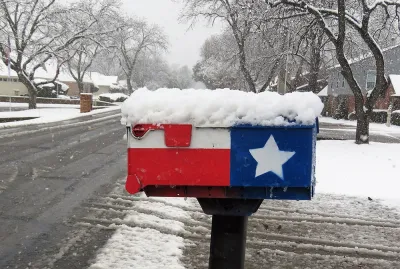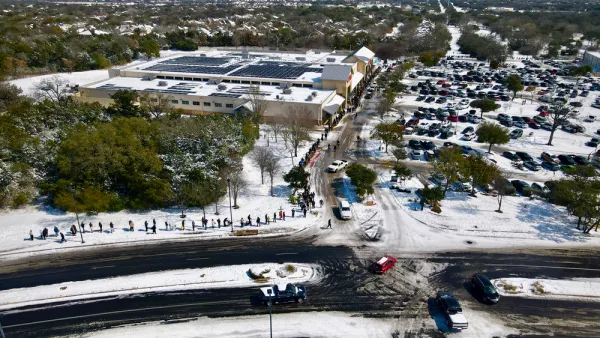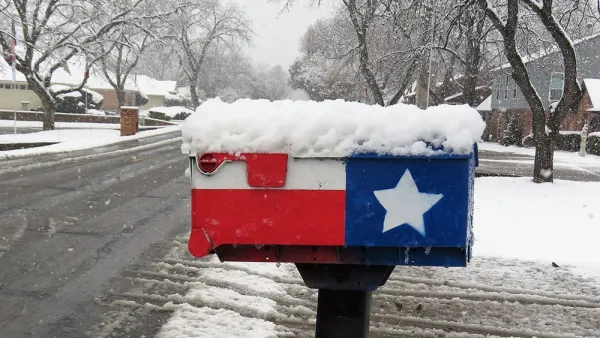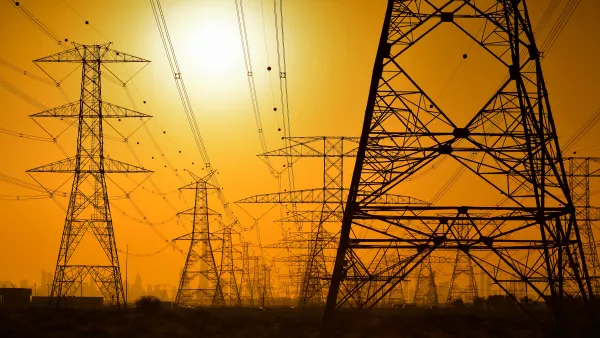As bad as the power outages are in Texas, they would be much worse if the independent energy grid operator hadn't initiated rolling blackouts. In an extensive interview with CBS Austin, Bill Magness, the head of ERCOT, explains what went wrong.

The polar vortex, not wildfires, is the cause, though both may be rooted in climate change. The Texas grid is prepared for summer heat, but this winter storm clearly caught them off-guard.
"The state’s electric grid operator lost control of the power supply Monday morning as 2 million Texas households didn't have heat or other electric appliances working at home while a massive winter storm delivered freezing temperatures across the state," reported The Texas Tribune on Feb. 15.
When the state’s grid operator, the Electric Reliability Council of Texas (ERCOT), began implementing rolling blackouts at 1:25 a.m. Monday, the outages were intended to be implemented on a rolling basis — up to 45 minutes per affected area, according to the ERCOT.
However, the power remained turned off in many areas for extended periods of time, resulting in hundreds of cases of carbon monoxide poisoning as people without power resort to unsafe means to keep warm in the record cold.
A Texas Tribune staff update on Feb. 17 indicates that on Wednesday morning, 2.7 million households were without power.
Supply and demand at the root of the problem
In an interview with CBS Austin (source article), ERCOT CEO Bill Magness tells Christian Flores that the winter storm imposed an unprecedented winter-time demand on the electric grid that they were not prepared to meet, forcing the company to shed power to avoid an even more disastrous outcome.
The reason why these outages have to exist is the electric system’s got to be managed where supply and demand are in balance all the time. If you have a big imbalance on the supply of electricity and demand, you can have catastrophic failures in the system...
These outages...are a controlled method of making sure we don’t lose the system, to make sure we don’t have a much bigger catastrophic event on the system...
We’re using electricity at a rate that Texas uses in the summer time when we’re pumping all of our air conditioners...There’s a number of factors where a storm like this that’s been so historic and we haven’t seen much precedent for pushes the system where demand is up and supply is down. The only way we can keep it in balance and keep it in control is to do outages.
Flores, who conducted the interview remotely, bundled up in his car, asks, "What would be a more catastrophic outcome than we’ve got going on?
"[T]he catastrophic outcome I’m talking about is if we had let the system go into a stage where a blackout would happen, we wouldn’t be talking about when are we going to restore the power, when are we going to turn it back on," responds Magness.
"We would be talking about rebuilding portions of the electric system. We wouldn’t be able to do this in days."
He added that it would take months to restore the grid had rolling blackouts not been implemented.
Caught unprepared
Flores notes that the storm was predicted, yet it's been 30 hours without power in many places. Magness responded that they had anticipated that rotating outages might be needed, just not of the duration that was required.
"I think the thing that really shifted it from shorter term rotating outages into this bigger issue is when this storm blew through Sunday night, and we saw a lot of our supply side come off...I think the large amount of supply that was lost due to issues around the storm is what’s driven us to the place where we have such a big imbalance."
Ready for extreme heat but not extreme cold
Flores asks why the grid can regularly handle extreme heat but collapses during the extreme cold.
All of our generators, all of our utilities, everyone in this business knows that summer is when the system is usually going to be the most stressed...What we saw this time is that demand looking like the summer, but the winter conditions themselves pose challenges you don’t get in the summer...I think it shows the system as it’s built has managed the biggest challenges it has faced, which are typically in the summer..."
There are many more dimensions to the crisis caused by the collapse of the power grid that millions of Texans are experiencing. Planetizen editor James Brasuell addresses some of them in the first paragraph of his blog post on Feb. 17, "Haves and Have Nots: Planning and the Deep Divides of the Pandemic."
Related in Planetizen:
-
Wind Power Sets a New Record in Texas, November 17, 2018
-
Bridging the Divides in the U.S. Electricity Grid, August 9, 2018
FULL STORY: ERCOT CEO answers questions amid scathing criticism over power outages across Texas

Analysis: Cybertruck Fatality Rate Far Exceeds That of Ford Pinto
The Tesla Cybertruck was recalled seven times last year.

National Parks Layoffs Will Cause Communities to Lose Billions
Thousands of essential park workers were laid off this week, just before the busy spring break season.

Retro-silient?: America’s First “Eco-burb,” The Woodlands Turns 50
A master-planned community north of Houston offers lessons on green infrastructure and resilient design, but falls short of its founder’s lofty affordability and walkability goals.

Test News Post 1
This is a summary

Analysis: Cybertruck Fatality Rate Far Exceeds That of Ford Pinto
The Tesla Cybertruck was recalled seven times last year.

Test News Headline 46
Test for the image on the front page.
Urban Design for Planners 1: Software Tools
This six-course series explores essential urban design concepts using open source software and equips planners with the tools they need to participate fully in the urban design process.
Planning for Universal Design
Learn the tools for implementing Universal Design in planning regulations.
EMC Planning Group, Inc.
Planetizen
Planetizen
Mpact (formerly Rail~Volution)
Great Falls Development Authority, Inc.
HUDs Office of Policy Development and Research
NYU Wagner Graduate School of Public Service




























